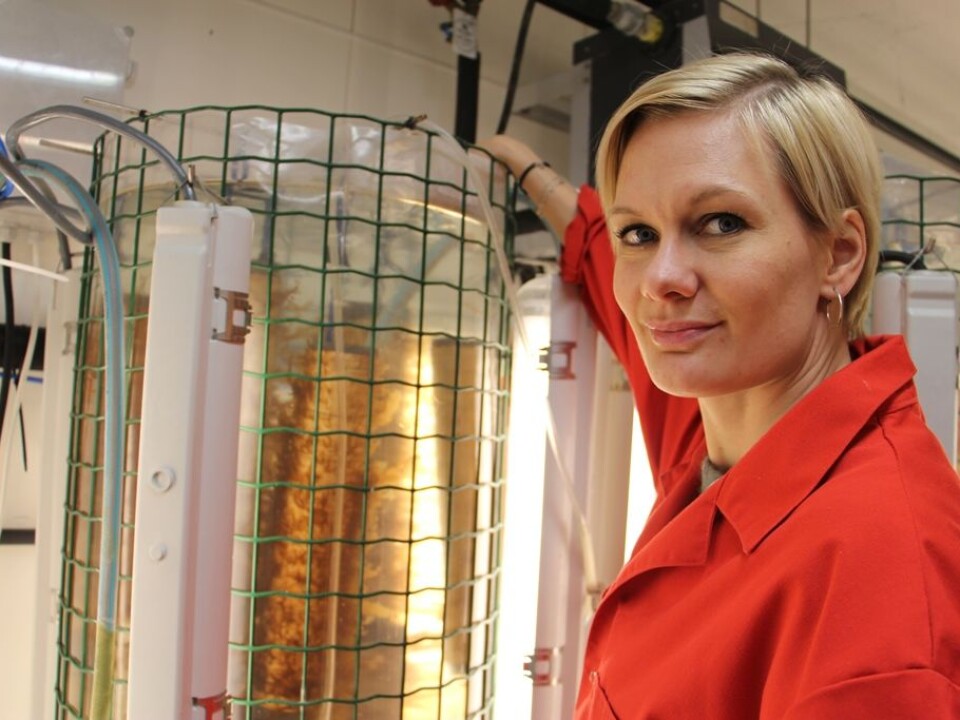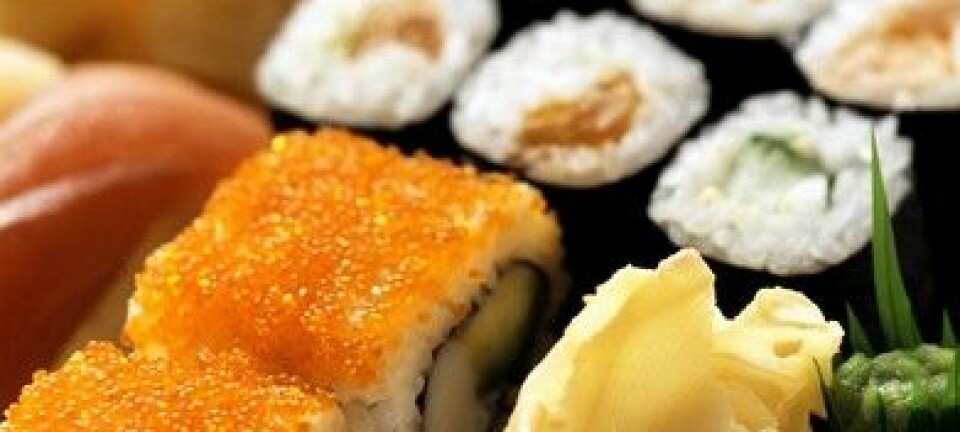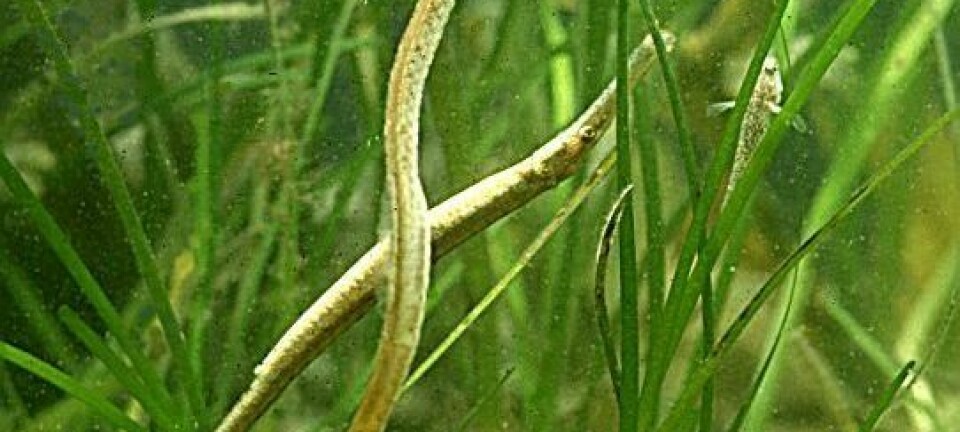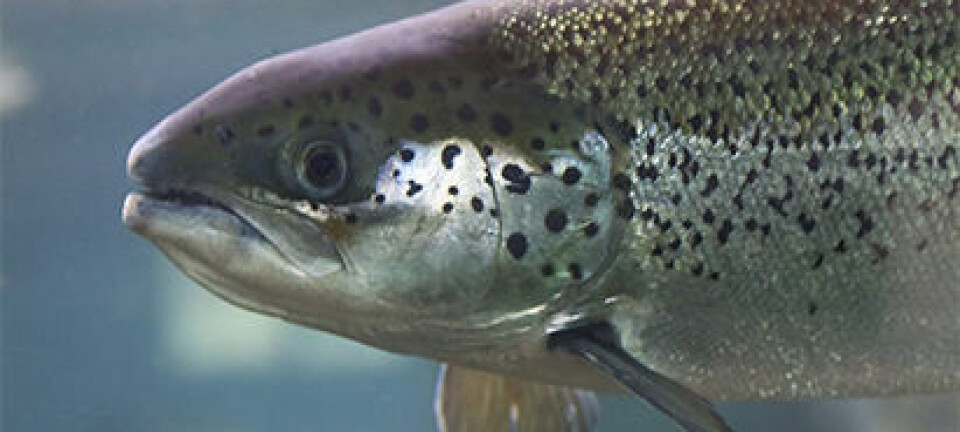An article from Norwegian SciTech News at SINTEF

Focus on local sushi ingredients
Sushi is more popular than ever. However, many of the ingredients are imported from Asia. But Norwegian researchers are now cultivating an alternative to the popular Wakame seaweed salad that doesn’t have to travel thousands of miles.
Denne artikkelen er over ti år gammel og kan inneholde utdatert informasjon.
The combination of waves and cold sea water make the coast of northern Norway an ideal place to cultivate the brown algae badderlocks.
This nutritious macroalgae is an excellent alternative to raw materials like Wakame – the tasty, green seaweed salad that is one of the ingredients used to make sushi.
"This variety is rich in nutrients, vitamins and minerals", says researcher Silje Forbord from SINTEF Fisheries and Aquaculture.
Researchers have been working on the cultivation of kelp for various products for many years. Biofuels, animal feed and fertiliser are just some of the products for which kelp can be used.

But now the researchers are aiming at the culinary market. In 2012, Norwegians ate about 70 million euros worth of sushi, according to the Norwegian Seafood Council. And sales are increasing.
This is why researchers believe that there is a good market for local ingredients of these popular dishes.
"After all, we already produce most of the salmon served in Norwegian sushi restaurants", says Forbord.
"Badderlocks could become a good, Norwegian-produced supplement. We’ve also started the small-scale cultivation of the red algae laver, which could replace Nori – the thin black seaweed used to wrap maki rolls".
Small plants, big needs
Badderlocks occurs naturally in the cold oceans. It can be cultivated along the Norwegian coast, where temperatures remain below 16 degrees, and in locations where there is little inflow of freshwater.
Badderlocks grows best in exposed areas, which means that large areas along the Norwegian coast are suitable for its cultivation. However, the successful cultivation of this algae depends on a little more than just the right marine conditions.
One of the challenges linked to badderlocks cultivation is that it is not sexually mature all year round, so that access to the spores ('seaweed seeds') is limited to certain periods.
"This means that we have to keep the microscopic phase of the kelp in cultures in the lab. By controlling the cultures using red light, we can prevent them from becoming sexually mature while still permitting them to grow," says Forbord.
"This enables us to scale up our cultures, and we can make them sexually mature by adding white light. The seed plants then develop, and can be transplanted when sea conditions are right".
The challenges linked to these cultures involve achieving stable production over time, and keeping them free from pollution by undesirable organisms that destroy the quality of the kelp.
"When the cultures have produced reproductive cells (eggs and sperm), we spray them onto ropes that we keep in the lab until the microscopic kelp plants have grown to lengths of several millimetres. We then put the ropes into the sea, where the plants can grow at rates of several centimetres per day under the right conditions", explains Forbord.
Thriving under facility conditions
In a previous trial, small badderlocks plants were placed in a special cultivation facility in the sea just off Bjugn on the Trøndelag coast.
"The algae appeared to thrive there, and we achieved extremely good growth”, says Forbord.
“But we need to improve our method of controlling sexual maturity and growth in the lab if we are to scale up production".
Competitive price
Another challenge that has to be tackled is the large area required for cultivation. The price of production also has to be reduced if the product is to be competitive.
"We have had good results cultivating kelp close to existing aquaculture facilities. Macroalgae bind carbon dioxide and can utilise some of the nutrient salts generated by salmon farming, thereby making a positive contribution to aquaculture's environmental accounts.
"This means that it might be worth creating Integrated Multi-Trophic Aquaculture facilities (IMTAs) – which produce several species at different levels of the food chain – for kelp cultivation. This would not only save space, but would also be an excellent way of exploiting the waste resources generated as by-products of fish farming," says Forbord.
Local, fresh and climate-friendly
The researchers believe that many people will prefer fresh, local products rather than ingredients imported from the Far East.
"We are seeing increasing numbers of consumers making more environmental and climate conscious food choices", says Forbord.
Badderlocks can also be used as fish feed, raw materials for bioenergy and as fertiliser.
The high proportion of vitamins and minerals also lead researchers to believe that the species might be suitable as a supplement included in what is known as 'functional food' – food to which extra, health-promoting nutrients are added.

































